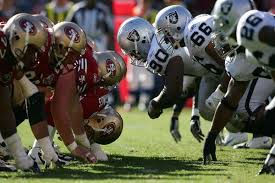The Legacy of the Position: Bengals, Tight End
- David Hegler

- Apr 28, 2023
- 4 min read

While the needs vary each year, the NFL Draft brings hope and optimism to every single franchise. Many view this hope as being for the fortunes of the franchise and in a lot of ways they are correct. New faces to the organization can spark championship dreams. But there is another kind of hope that needs to be discussed. The hope is that player lives up to the standards set before him by those who once stood in his shoes for the franchise. This year, the Cincinnati Bengals are in need of a tight end. Let's take a look at their history with the position and the standards that have already been set.
The Lineage

From their very beginning, the Bengals have enjoyed excellence at tight end and Bob Trumpy was the first. the tight end from Utah went to two straight AFL All-Star Games and a Pro Bowl to begin his career and was All-AFL in 1969. That sophomore season was his finest as Trumpy gained 835 yards and scored nine touchdowns in the AFL's last year of existence. After a two-year hiatus, he made the Pro Bowl again in 1973 after gaining 435 yards and scoring five touchdowns.
After Trumpy retired in 1977, the Bengals drafted Don Bass who was a tight end for just a single season before switching to receiver in 1979. With that switch came opportunity when the team signed Dan Ross in 1979. While he was never great, he was solid for the Bengals' offense as he began his career catching 41 passes and gradually increased his productivity.

By 1981, he was a favored target of Ken Anderson, catching 71 passes for 910 yards and five touchdowns. He was exceptional in the Bengals' Super Bowl loss that year, catching a Super Bowl record 11 passes for 104 yards and two touchdowns in the 26-21 defeat. It was easily the highlight of his career. After he made the Pro Bowl the following year, Ross's career began to simmer down and by 1986 was with the Packers
By 1985, Rodney Holman had taken Ross's place, catching 38 passes for 479 yards and seven touchdowns. Three years later, he made the first of three consecutive Pro Bowls after catching 39 passes for 527 yards and three touchdowns for the eventual AFC champions. He was Second Team All-Pro the next two years and dominated 1989 by posting career highs in catches (50), yards (739) and touchdowns (nine).
As the Bengals entered the nineties, they began to struggle, failing to make the playoffs after the 1990 season. While it was a lost decade for the organization, it did have a bright spot in Tony McGee. Between 1995 through 1997, he scored at least four touchdowns each year and gained more than 700 yards alone in 1995. Though he was never a Pro Bowler, he was consistent for an inconsistent franchise.
The team finally reached the postseason again in 2005 after quarterback Carson Palmer had established himself as the franchise quarterback. But despite the proficiency of their quarterback, the Bengals failed to use their tight ends that year, relying on two for minimal results. Between Matt Schobel and Reggie Kelly, the two caught 33 passes for 283 yards and two touchdowns that year.
Four years later, the Bengals were back in the playoffs. Again, they relied on two tight ends for much of the season. This time, however, they were slightly more productive. Between J.P. Foschi and Daniel Coats, they combined to catch 43 passes for 410 yards and two touchdowns.
After losing to the Jets in the 2009 Wild Card, the Bengals knew that they needed to draft a reliable tight end if they wanted to make a deep playoff run. So they drafted Oklahoma's Jermaine Gresham with the 21st overall pick in the 2010 NFL Draft. Built more like a basketball player, the 6'5" 260 pound Gresham would quickly make a name for himself in Cincinnati, catching 52 passes for 471 yards and four touchdowns as a rookie from a frustrated Carson Palmer.
That offseason, an escalating feud between Palmer and ownership finally came to a head and Palmer retired in a huff. Though he would eventually be traded to the Raiders later that year, the team set its sights on rookie quarterback Andy Dalton. With that breath of fresh air, Jermaine Gresham blossomed as a playmaker, nearly gaining 600 yards that year and scoring six times. Blessed with talent all around him, Gresham made the next two Pro Bowls as the Bengals became a perennial playoff team for the first time in decades.
By 2014, the team had Notre Dame's Tyler Eifert on its roster and let Gresham leave in free agency, even after gaining 460 yards and scoring five touchdowns that year. Eifert shined brightly in 2015, gaining 615 yards and scoring 13 touchdowns, earning a Pro Bowl invitation. While he would remain with the team through 2019, he would never approach those numbers again.
towards the end of Eifert's career, C.J. Uzomah took his spot and began to make himself into a reliable weapon. In 2021, he helped the team reach the playoffs for the first time since 2015 by gaining 493 yards and scoring five touchdowns, all career highs. The Bengals made it all the way to the Super Bowl that year and despite Uzomah's 11 yards on two receptions, the Bengals lost to the Rams 23-20.
The Legacy
Here is where we stand. The Bengals missed Uzomah last year after he left for the Jets. Their leading tight end was Irv Smith Jr. and he only gained 182 yards all season. They need a reliable tight end to compete with the rest of the top contenders in the league. Who will they draft? We shall see this weekend.



Comments